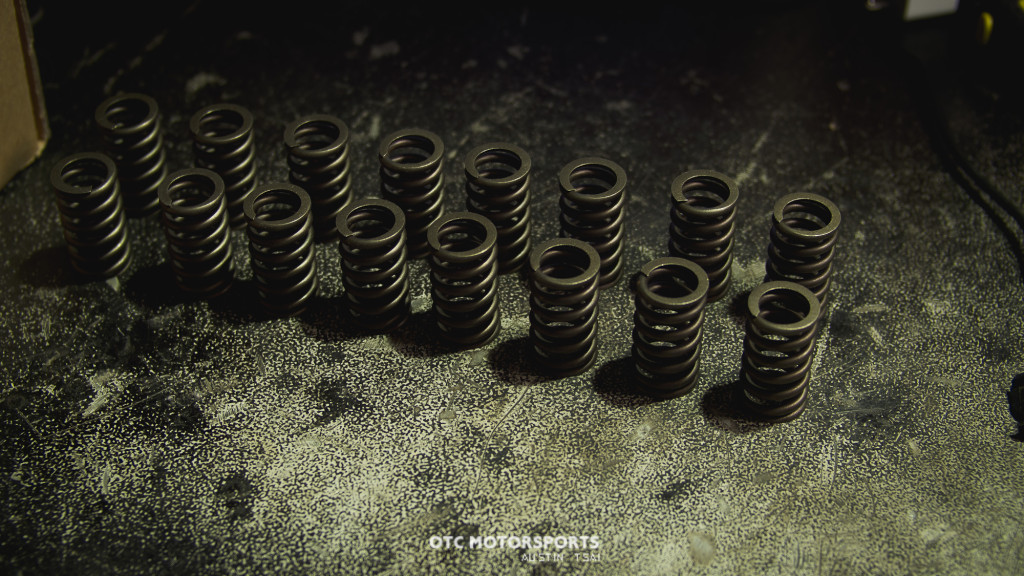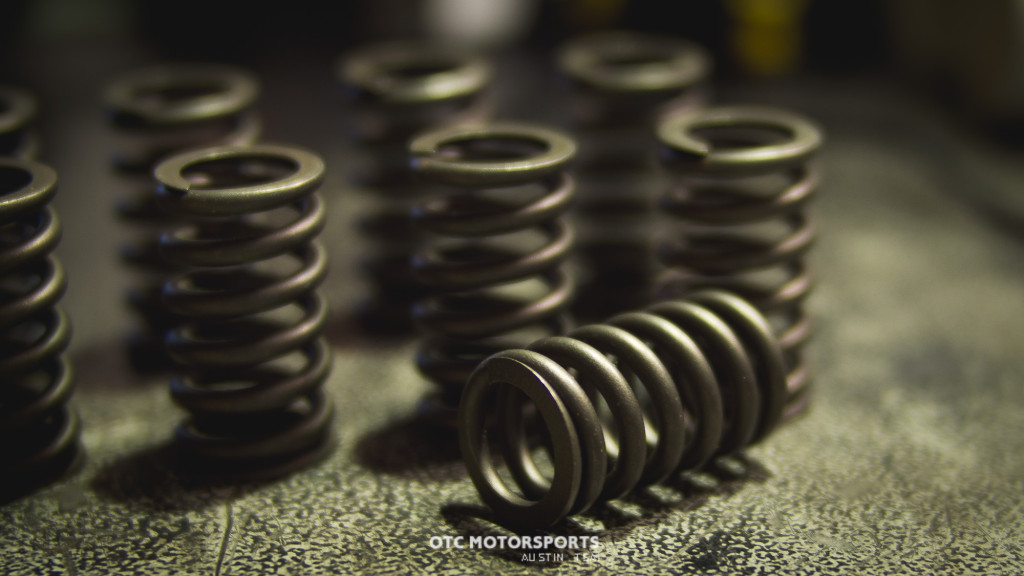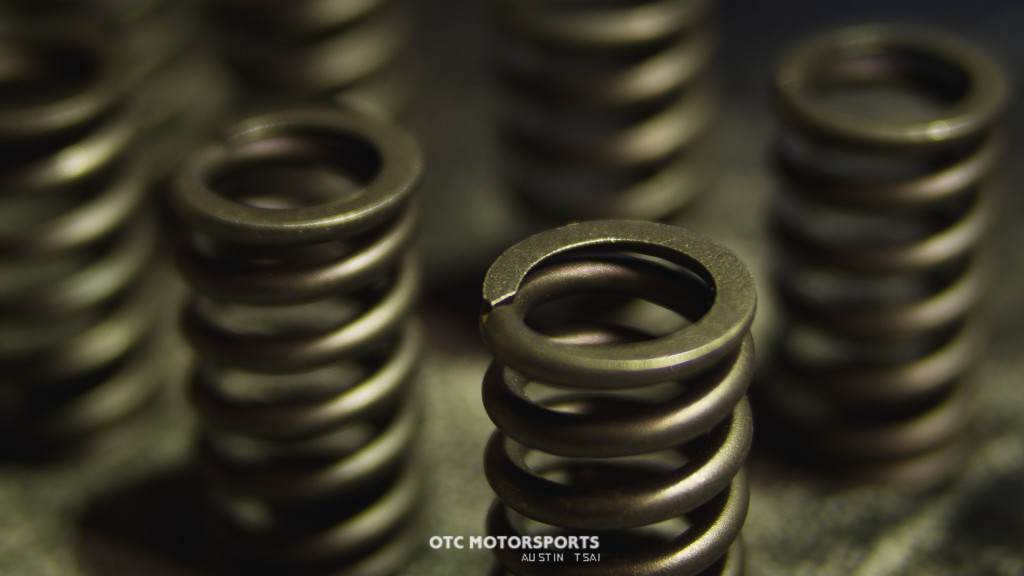Mazda BP Valve spring Info
#21
In theory, assuming a very low friction environment (which the cam/spring area should be, since it's bathed in oil), shouldn't the hp loss be negligible between light and heavy springs?
Sure it's harder to open a valve with a heavier spring costing hp, but the spring rebounds after opening with more force as well. It'd like comparing the overall work lifting a 10lbs weight 5 feet then letting it drop, vs lifting a 100lbs weight 5 feet then letting it drop (say you're running a turbine or something). In the end the total amount of energy gained/lost from the system in a frictionless environment should be 0 in both cases.
I'm sure there's some additional frictional losses compared to stock, but I bet it's not enough to worry about when debating installing better springs.
Sure it's harder to open a valve with a heavier spring costing hp, but the spring rebounds after opening with more force as well. It'd like comparing the overall work lifting a 10lbs weight 5 feet then letting it drop, vs lifting a 100lbs weight 5 feet then letting it drop (say you're running a turbine or something). In the end the total amount of energy gained/lost from the system in a frictionless environment should be 0 in both cases.
I'm sure there's some additional frictional losses compared to stock, but I bet it's not enough to worry about when debating installing better springs.
#22
Thread Starter
Senior Member
iTrader: (1)
Joined: Mar 2012
Posts: 588
Total Cats: 203
From: Pensacola Fla.
When is there less pressure inside the cylinder than there is in the intake manifold and you want the valve to be shut? During compression, power, and exhaust strokes there should be more pressure in the cylinder, right? During intake, the valve is open. Or is it just for the brief transition periods around overlap/etc?
--Ian
--Ian
A burnt valve can happen for a few reasons, one of the main ones is not enough contact between the valve face and the valve seat. Not enough heat is transfered from the valve and it burns.
Another common one is the valve or seat distort in shape causing a small opening between the two, then you get the torch effect.
In theory, assuming a very low friction environment (which the cam/spring area should be, since it's bathed in oil), shouldn't the hp loss be negligible between light and heavy springs?
Sure it's harder to open a valve with a heavier spring costing hp, but the spring rebounds after opening with more force as well. It'd like comparing the overall work lifting a 10lbs weight 5 feet then letting it drop, vs lifting a 100lbs weight 5 feet then letting it drop (say you're running a turbine or something). In the end the total amount of energy gained/lost from the system in a frictionless environment should be 0 in both cases.
I'm sure there's some additional frictional losses compared to stock, but I bet it's not enough to worry about when debating installing better springs.
Sure it's harder to open a valve with a heavier spring costing hp, but the spring rebounds after opening with more force as well. It'd like comparing the overall work lifting a 10lbs weight 5 feet then letting it drop, vs lifting a 100lbs weight 5 feet then letting it drop (say you're running a turbine or something). In the end the total amount of energy gained/lost from the system in a frictionless environment should be 0 in both cases.
I'm sure there's some additional frictional losses compared to stock, but I bet it's not enough to worry about when debating installing better springs.
But it is a common design, Mazda, Nissian, Toyota, Ford and Jaguar all have heads that use it.
Common sense, logic and experiance all come into play, Instead of finding a spring that installs at 80lbs, I could find one that installs at 150lbs.
But there is no need for a 150lbs set up,at this time, I have not heard anyone here running 50+ psi of boost and spinning 12,000 RPM
#24
From Summit info:
Universal:Yes
Installed Height (in):1.570 in.
Seat Pressure at Installed Height (lbs):66 lbs.
Open Height (in):1.180 in.
Open Pressure (lbs):175 lbs.
What was measured:
At installed height of 1.550", the seat pressure was 84 lbs.
At 0.350 compression from installed height (1.200") the seat pressure was 180 lbs
The original stock spring was measured to have seat pressure of 46 lbs at 1.550 height and 118 lbs at compressed 0.350.
The stock valve spring has yellow paint mark on it.
Right now I am waiting to confirm the installed valve height for +1 Supertech valves and then deciding which springs to use.
#25
Anyone run the Eibach singles? $180 from Summit. They claim 66 lbs @ 39 mm / 200 lbs @ 27 mm. Lift 12 mm / Bind 24.2 mm. Looks like a middle option in price and pressure from OEM. Would like to hear some comments.
http://performance-suspension.eibach...vs-catalog.pdf
http://performance-suspension.eibach...vs-catalog.pdf
#27
As long as the spring operates within I design operating lengths the spring force is linear depending on the distance it travels. Google hookes law.
To keep the valvespring in this operating mode the length should be kept such that there is no binding of coils at full lift and installed height being longer than free height of the spring. Having couple of mm safety in these lengths would be advisable.
#28
Bump from the dead, thought I'd add my findings here:
@ 1.181″ 165lbs
@ 1.200″ 180lbs
Coil bind at 26mm.
I actually ended up returning my set of Sealed Power VS-855 to Summit Racing. I noticed that the surface finish of these valves are very coarse and rough, there is definitely a case of "you get what you pay for here".


You can definitely see the coarse grain structure here:

Not all spring steel is the same, I ended up using a set of Mazdaspeed duals even though there is an exponential cost difference.
@ 1.181″ 165lbs
@ 1.200″ 180lbs
Coil bind at 26mm.
I actually ended up returning my set of Sealed Power VS-855 to Summit Racing. I noticed that the surface finish of these valves are very coarse and rough, there is definitely a case of "you get what you pay for here".


You can definitely see the coarse grain structure here:

Not all spring steel is the same, I ended up using a set of Mazdaspeed duals even though there is an exponential cost difference.
#29
This is a very informative thread. A+
The question I always wanted to know is how do you calculate the desired seat pressure for valvetrain weight, camshaft specs, and rpm range?
Don't you want to have just the right amount of spring compression for your application? I have seen too many motors with springs way too big for a particular application, throwing horsepower away.
The question I always wanted to know is how do you calculate the desired seat pressure for valvetrain weight, camshaft specs, and rpm range?
Don't you want to have just the right amount of spring compression for your application? I have seen too many motors with springs way too big for a particular application, throwing horsepower away.
I'm wondering the same thing as the 2 posts above:
whats the perfect balance for your average boost setting (10-15) and/or a bit higher (20+)
Something tells me that you don't want to go too stiff, or you'll be putting excessive wear/tear on your valvetrain and/or throwing away power.
Some completely un-educated guessing here: if a stock motor operates at 1 bar and you're running 15+ psi (2 bar) then the double spring rates shouldn't be too bad? Probably doesn't work that way, just guessing
whats the perfect balance for your average boost setting (10-15) and/or a bit higher (20+)
Something tells me that you don't want to go too stiff, or you'll be putting excessive wear/tear on your valvetrain and/or throwing away power.
Some completely un-educated guessing here: if a stock motor operates at 1 bar and you're running 15+ psi (2 bar) then the double spring rates shouldn't be too bad? Probably doesn't work that way, just guessing
I prefer simple calcs, and you can look at this very simply from a NA vs boosted situation. It's harder to consider changes in rpm, but that can be done as well, but there are velocity/acceleration/mass considerations to make.
Anyway, if you know your valve head area, you can simply consider this a pressure force calculation.
Assuming vacuum as an NA was 15 inHg (7.4 psi vac) and then you go turbo and boost to 15 psig. For sake of argument, lets assume the valve head area is 1 sq in (I don't know the valve size, forgive me, I'm new to miatas).
The calc would be this simple: (7.4+15) * 1 = 22.4 lbs
So in this case, to balance everything out, all else being equal, you'd want to add 20-25 lbs to your spring load.
This of course is ignoring all sorts of other potential effects and impacts, and over simplifying. But it beats guessing.
This would be for the intake side. You'd also want to consider that exhaust pressure between the head and turbine could be double that of the intake manifold pressure. In really small turbos, it could be triple.
#30
An interesting article I stumbled across tonight: Beehive Springs Sound Great, But Will They Work For You? - EngineLabs
Although the article really is discussing the benefits of using a beehive design spring, I think there is some information to take away.
One being that seat pressure is being minimized as much as possible with a beehive spring, lowering the amount of stress that the valvetrain sees. The shape of the beehive spring is supposed to help with valve acceleration compared to a conventional style spring based on the shape of the coils near the top.
This could be related to the discussion of single spring vs. dual springs in our Miata heads, with the common dual setup offered by Supertech. I read a lot of discussion on the easy choice being the Supertech duals, but no real math behind it; just the fact that it worked well for the last guy therefore was good stuff.
Resonance in the valvetrain is also briefly discussed. They make a mention of the ovate wire used for spring steel material to counteract the resonance encountered with high rpm frequencies. What was more interesting though was that they mention choosing an installed height as close to coilbind as possible. I think general rule of thumb for installed height is determining the amount of lift, give or take a few mm so long as the spring does not bind at this height installed. This means that a shorter spring which has been shimmed to the appropriate height can resonate less than one which has not been installed close to coilbind.
Although the article really is discussing the benefits of using a beehive design spring, I think there is some information to take away.
One being that seat pressure is being minimized as much as possible with a beehive spring, lowering the amount of stress that the valvetrain sees. The shape of the beehive spring is supposed to help with valve acceleration compared to a conventional style spring based on the shape of the coils near the top.
This could be related to the discussion of single spring vs. dual springs in our Miata heads, with the common dual setup offered by Supertech. I read a lot of discussion on the easy choice being the Supertech duals, but no real math behind it; just the fact that it worked well for the last guy therefore was good stuff.
Resonance in the valvetrain is also briefly discussed. They make a mention of the ovate wire used for spring steel material to counteract the resonance encountered with high rpm frequencies. What was more interesting though was that they mention choosing an installed height as close to coilbind as possible. I think general rule of thumb for installed height is determining the amount of lift, give or take a few mm so long as the spring does not bind at this height installed. This means that a shorter spring which has been shimmed to the appropriate height can resonate less than one which has not been installed close to coilbind.
#34
Good read.
I was wondering if the Eibach EVS Valve Spring Set with 75lbs was over kill with dual springs and Titanium retainers?
Even though the supertech is what is highly recommended on this site for rebuilds and they are significantly cheaper from my search 55 dollar difference.
I will be using a fluctuating psi for different purpose in the boost application for street, autocross, and track. I am going to use upwards of 8 to 12 for autocross and +20psi track.
I was wondering if the Eibach EVS Valve Spring Set with 75lbs was over kill with dual springs and Titanium retainers?
Even though the supertech is what is highly recommended on this site for rebuilds and they are significantly cheaper from my search 55 dollar difference.
I will be using a fluctuating psi for different purpose in the boost application for street, autocross, and track. I am going to use upwards of 8 to 12 for autocross and +20psi track.










